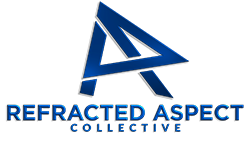
Uncertainty is the constant companion of every leader. It doesn’t wait for the perfect moment or the ideal conditions. It arrives unannounced, demanding decisions that shape the future. The strategist’s role is not to eliminate uncertainty but to convert it into deliberate, confident action. This transformation is neither simple nor linear. It requires a mindset that embraces complexity without paralysis.
- Facing the Unseen Pressure of Strategy
- Why Strategy Remains an Elusive Challenge
- Reframing Strategy as a Dynamic Process
- Challenging Conventional Wisdom on Strategic Planning
- Recognizing the Ripple Effects of Strategic Decisions
- Five Practical Steps to Strengthen Strategic Execution
- Strategic Leadership Demands Operational Clarity
- Partnering with Refracted Aspect for Operational Insight
Facing the Unseen Pressure of Strategy
Strategy often feels like a relentless weight. The pressure to anticipate every variable, to predict every market shift, can be overwhelming. Founders and operators know this tension intimately. It’s the quiet frustration of knowing that hesitation costs more than a misstep.
There’s a persistent internal conflict: the desire to act decisively clashes with the fear of moving too soon or in the wrong direction. This tension breeds second-guessing and, sometimes, inaction. The strategist’s challenge is to navigate this space without losing clarity or confidence.
It’s not about having all the answers. It’s about managing the unknown with a steady hand. The strategist must hold space for ambiguity while driving forward with purpose. This balance is delicate and demands emotional resilience as much as intellectual rigor.
Why Strategy Remains an Elusive Challenge
The difficulty with strategy lies beneath the surface. Market conditions shift unpredictably, but that’s only part of the story. More often, the real obstacles are internal—systemic blind spots and flawed mental models that distort perception.
Founders and operators frequently fall into the trap of relying on past successes as a blueprint for future decisions. This creates a feedback loop that blinds them to emerging realities. The comfort of familiar frameworks can be a cage, limiting the ability to see beyond immediate pressures.
Resistance within the organization compounds the problem. Strategic shifts threaten established routines and vested interests. This internal friction slows momentum and dilutes focus. The strategist must recognize these dynamics and address them with precision, not force.
Reframing Strategy as a Dynamic Process
Strategy is not a fixed plan but a continuous dialogue with uncertainty. It’s a process of iterative learning and adjustment, not a one-time declaration. This shift in perspective frees leaders from the paralysis of perfection.
Strategy thrives on adaptability, not rigidity. The best strategists design frameworks that accommodate change rather than resist it. They build decision-making processes that prioritize speed and clarity over exhaustive analysis.
This approach demands discipline. It requires setting clear priorities and defining boundaries for experimentation. Without these guardrails, adaptability becomes chaos. With them, it becomes a powerful tool for turning uncertainty into actionable insight.
Challenging Conventional Wisdom on Strategic Planning
Overplanning is often the enemy of effective strategy. Many founders believe that more data and longer planning cycles reduce risk. In reality, this can create false confidence and delay critical decisions.
Strategic clarity emerges from focused choices, not exhaustive options. The temptation to keep all possibilities open dilutes energy and attention. Leaders must learn to say no decisively and embrace constraints as enablers of creativity.
This mindset shift is uncomfortable but necessary. It moves strategy from a theoretical exercise to a practical discipline embedded in daily operations. The strategist’s role is to enforce this discipline with calm authority.
Recognizing the Ripple Effects of Strategic Decisions
Every strategic choice triggers a cascade of consequences beyond immediate outcomes. These second-order effects often go unnoticed until they become problems. A good strategist anticipates these ripples and plans accordingly.
This requires a systems-thinking approach—seeing the business as an interconnected whole rather than isolated parts. It means understanding how changes in one area impact others, from operations to culture to customer experience.
Ignoring these dynamics risks unintended consequences that undermine progress. The strategist’s insight lies in balancing short-term gains with long-term sustainability, ensuring that actions today don’t create obstacles tomorrow.
Five Practical Steps to Strengthen Strategic Execution
- Clarify decision criteria: Define what matters most for your business outcomes and use these criteria to guide every strategic choice.
- Limit planning horizons: Focus on near-term actions with clear checkpoints rather than distant, speculative forecasts.
- Embed feedback loops: Create mechanisms to gather real-time data and adjust course quickly based on what’s working.
- Align teams around priorities: Communicate clearly and consistently to ensure everyone understands the strategic focus and their role in execution.
- Challenge assumptions regularly: Schedule deliberate reviews to test mental models and surface blind spots before they become liabilities.
Strategic Leadership Demands Operational Clarity
Strategy and operations are inseparable. Without operational clarity, strategy remains abstract and ineffective. Leaders who bridge this gap create organizations that respond to uncertainty with agility and confidence.
This integration requires humility and discipline. It means accepting that strategy is not a solo endeavor but a collective practice grounded in execution. The strategist’s role expands beyond vision-setting to include fostering alignment and accountability.
Ultimately, the cost of ignoring this connection is high. It leads to wasted effort, missed opportunities, and eroded trust. The operator who embraces strategic leadership understands that clarity in action is the true measure of success.
Partnering with Refracted Aspect for Operational Insight
Refracted Aspect works closely with founder-led and leadership-driven teams seeking real clarity across marketing, revenue, operations, and finance. They don’t chase trends or quick fixes. Instead, they focus on building businesses that endure through disciplined strategy and execution.
If you want a grounded, structured diagnostic of your operations, consider taking the next step with them. You can Get the Operations Health Check, a practical tool designed to reveal what’s working, what’s missing, and what to prioritize next. This is not a sales pitch but a conversation—a chance to explore your business with a partner who understands the complexities of leadership and execution.
















